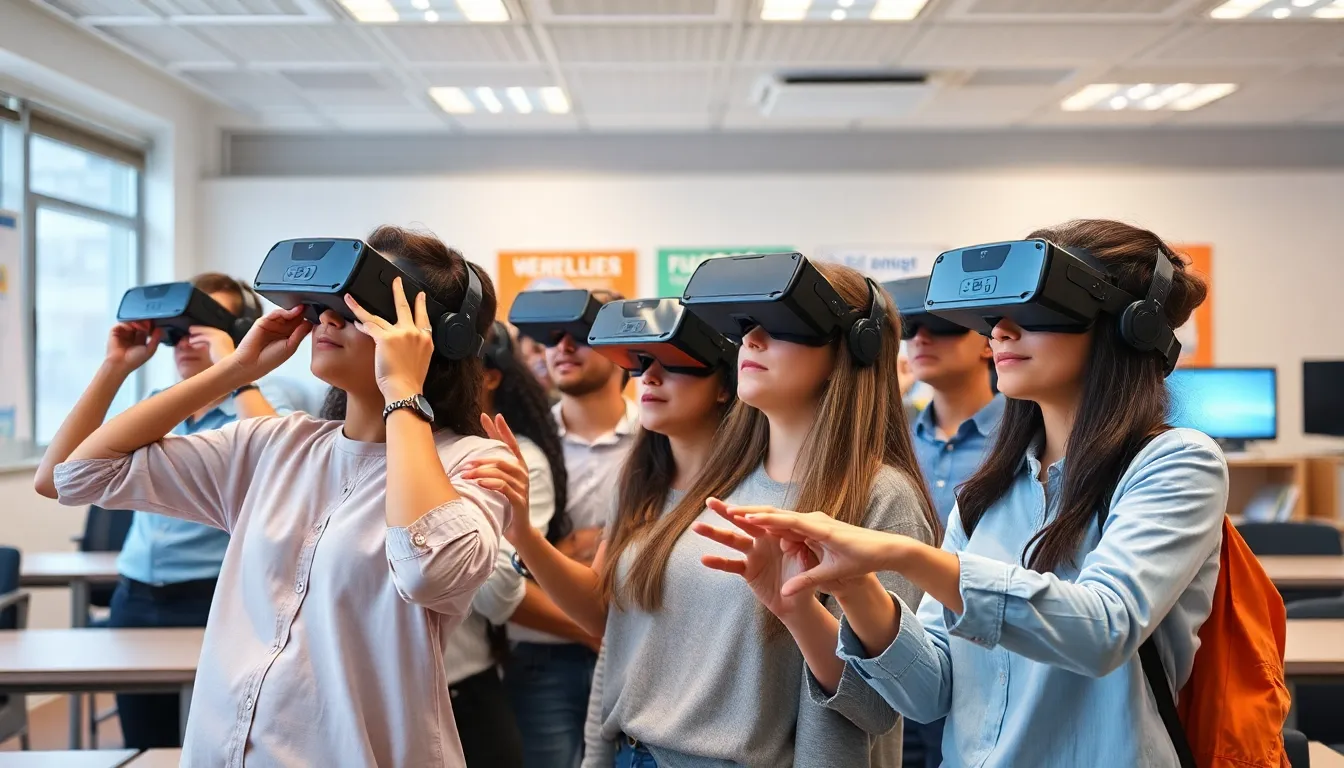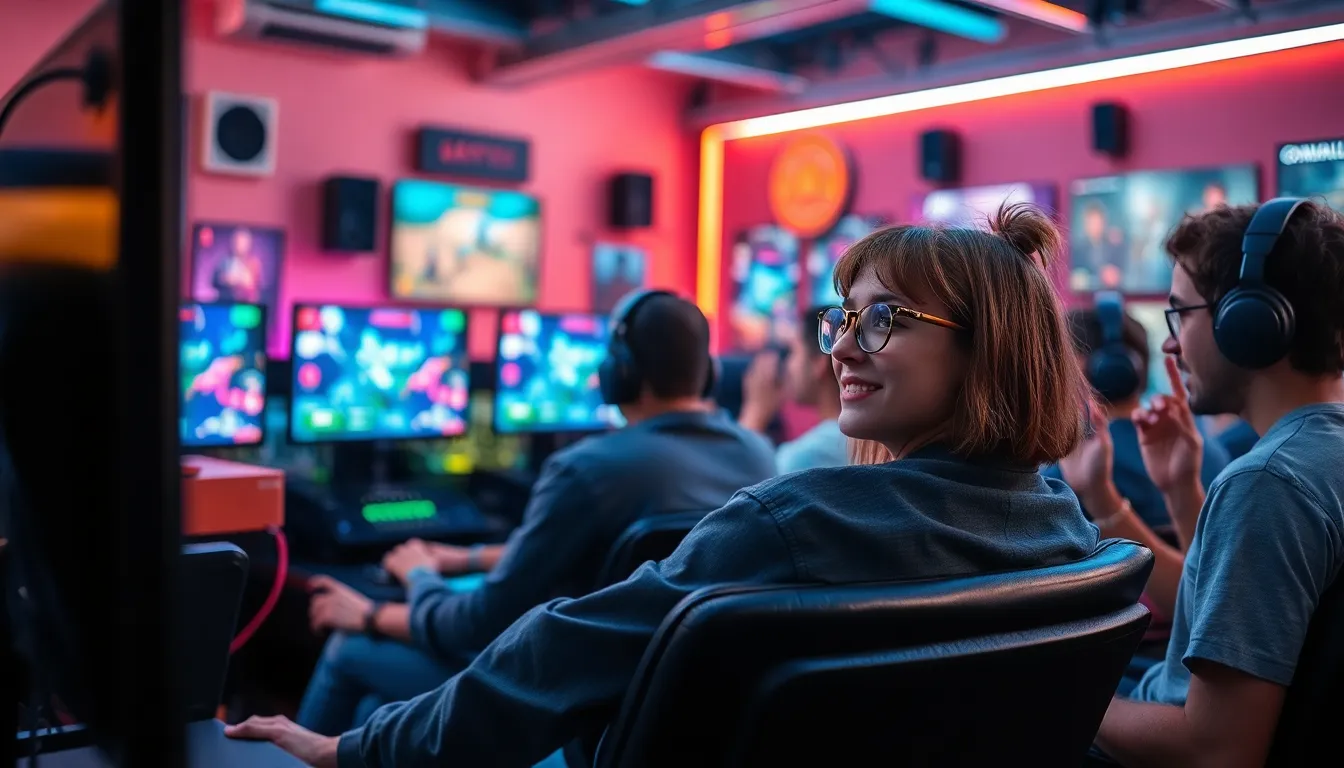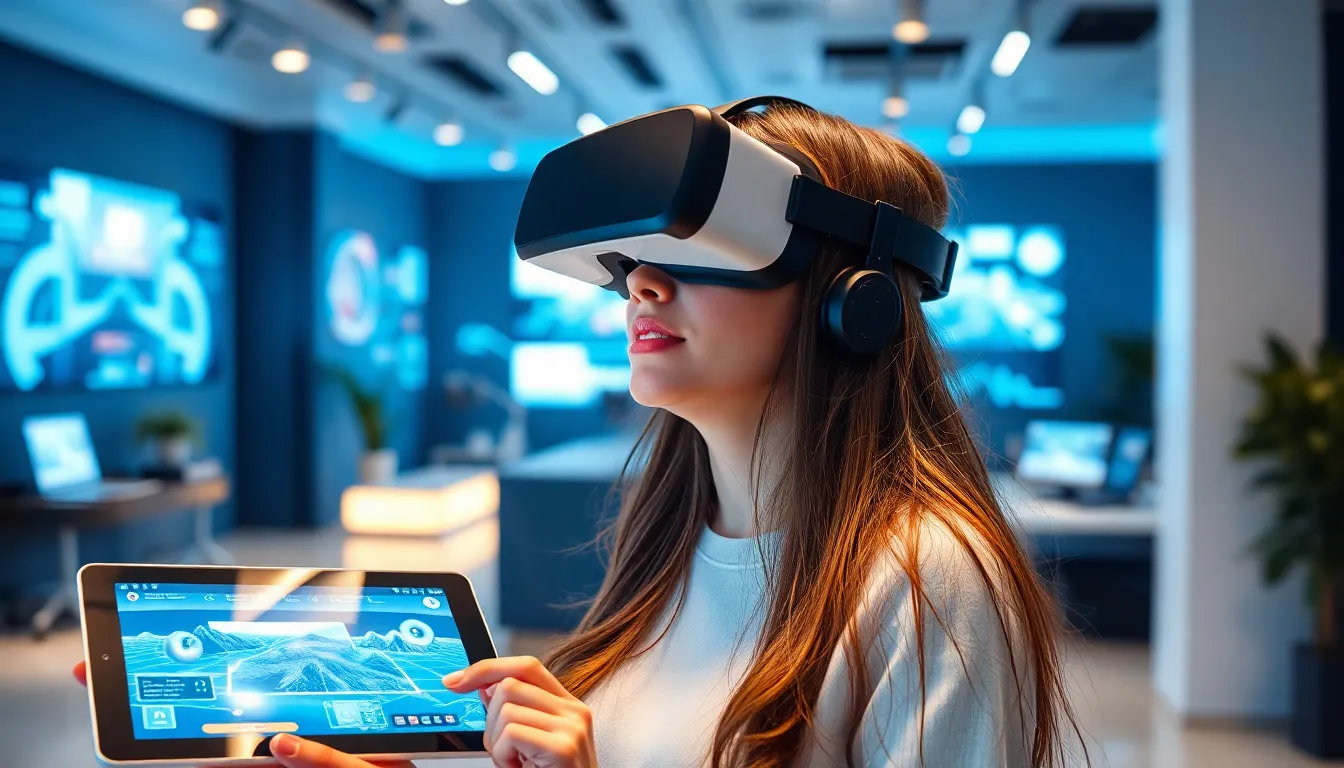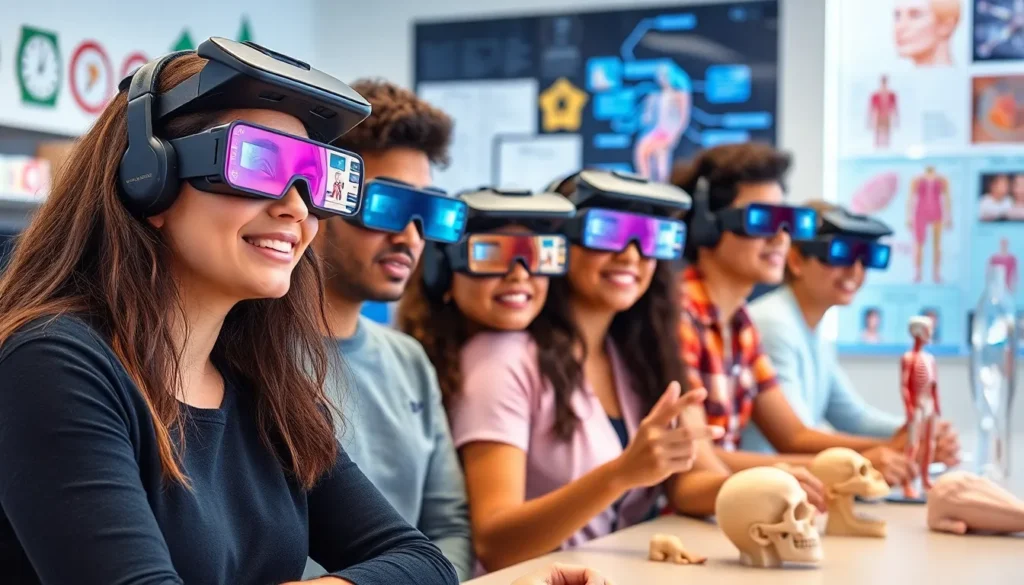Table of Contents
ToggleIn a world where reality sometimes feels a bit too mundane, augmented reality (AR) and virtual reality (VR) swoop in like superheroes to save the day. These technologies aren’t just for gamers anymore; they’re transforming industries from education to healthcare with a sprinkle of magic. Imagine learning anatomy by exploring a 3D heart or training for a surgical procedure in a lifelike virtual environment.
Overview of AR and VR Solutions
AR and VR solutions offer innovative ways to engage users through immersive experiences. Augmented reality enhances the real world by overlaying digital information, providing contextual details that improve user interactions. Virtual reality, in contrast, completely immerses users in a simulated environment, allowing them to explore and interact as if they are physically present.
Education benefits significantly from these technologies. For example, AR allows students to visualize complex concepts, such as anatomy, in 3D. This method makes learning more impactful, as students can interact with structures like organs and systems in a tangible manner. VR transforms training in skilled professions by simulating real-life scenarios. Surgeons, for instance, can practice intricate procedures in a risk-free virtual setting.
Industries like healthcare and manufacturing also gain from AR and VR. Medical professionals use AR to aid in diagnostics by visualizing patient data directly over their field of view. In manufacturing, VR enhances training programs, enabling workers to familiarize themselves with machinery without the dangers associated with real equipment.
Additionally, retailers utilize AR to enhance customer experiences. Shoppers can visualize products in their own spaces before making purchases, bridging the gap between online and in-store shopping. Similarly, VR offers virtual tours for real estate, providing potential buyers the ability to explore properties from anywhere.
The integration of AR and VR solutions continues to expand across various sectors. Companies leverage these technologies to improve efficiency and foster creativity. As advancements persist, the potential applications of AR and VR will likely grow, transforming how professionals interact with tools, environments, and one another.
Applications of AR and VR Solutions

AR and VR technologies are making significant strides across various industries, enhancing experiences and interactions in notable ways.
In Education
Augmented reality enriches the learning process by enabling students to visualize complex subjects. Students interact with 3D models, making abstract concepts more tangible. Virtual reality sets up simulations that replicate real-life scenarios. Those simulations help practice skills like public speaking or emergency response. Educational institutions are adopting these technologies to boost engagement and retention. Teachers find that students grasp concepts faster and develop critical thinking skills through these immersive experiences.
In Healthcare
Healthcare professionals utilize AR for improved diagnostics and surgical precision. Surgeons access real-time data, guiding their decisions during procedures. Virtual reality is instrumental for training medical students in a risk-free environment. Practicing surgeries or emergency responses in VR builds confidence and competence. Medical institutions recognize the value of these technologies in enhancing patient care. Patients experience reduced anxiety before procedures through VR relaxation techniques, demonstrating the multifaceted applications of AR and VR in healthcare.
In Retail
Retailers harness AR to transform the shopping experience. Customers visualize products in their spaces using smartphone apps that project items into their homes. Virtual reality offers immersive shopping environments where consumers explore stores from home. Such experiences make online shopping more interactive and enjoyable. Brands report higher engagement and sales when using AR and VR technologies. Companies increasingly prioritize these solutions to meet customer demands for innovative shopping alternatives.
Benefits of AR and VR Solutions
AR and VR solutions bring numerous benefits across various sectors. These technologies enhance experiences and foster engagement in innovative ways.
Enhanced User Experience
AR and VR create immersive environments that transform how users interact with products and services. Users explore virtual spaces, which helps them better understand complex concepts in education. Through AR, students visualize anatomy with 3D models, allowing for deeper comprehension. In retail, customers can use AR apps to see how furniture looks in their homes, reducing uncertainty in purchasing decisions. These enhanced experiences not only captivate users but also facilitate better information retention and understanding.
Increased Engagement
Engagement levels rise significantly when AR and VR are integrated into interactive content. Brands utilize AR to create unique marketing strategies, making customers an integral part of the experience. Data shows that retailers implementing these technologies see a 70% increase in customer interaction. In education, immersive technology leads to active participation, fostering critical thinking and collaboration among students. Effective engagement through AR and VR promotes strong connections that encourage repeat interactions and improved customer loyalty.
Challenges in Implementing AR and VR Solutions
Implementing AR and VR solutions poses several challenges that organizations encounter. Technical limitations and cost considerations significantly impact adoption across diverse sectors.
Technical Limitations
Technical limitations present hurdles for AR and VR. Hardware requirements often include specialized devices that some users lack. Software compatibility also varies, leading to inconsistent experiences on different systems. Furthermore, developers face difficulties ensuring high-quality graphics and low latency for seamless interactions. Limited processing power in mobile devices may hinder the effectiveness of AR applications. As a result, organizations must navigate these constraints to create satisfactory user experiences.
Cost Considerations
Cost considerations factor heavily into the decision-making process for AR and VR solutions. Initial investments for hardware and software development can be substantial, often reaching thousands of dollars. Organizations frequently face ongoing maintenance and upgrade expenses, adding to the overall budget. Additionally, training employees to use these technologies involves both time and resources. Companies may find it challenging to justify costs without immediate returns on investment. Prioritizing these financial aspects remains crucial for successful implementation across various industries.
Future Trends in AR and VR Solutions
AR and VR technologies are evolving rapidly, showing immense potential for various sectors. In education, personalized learning experiences through adaptive AR content lead to improved student engagement. Students interact with educational material in dynamic ways, enhancing retention and understanding.
Healthcare continues to benefit from AR and VR advancements. Surgeons utilize AR for real-time overlays during procedures, while medical training increasingly incorporates VR simulations. Such training environments replicate real-life scenarios, allowing practitioners to refine their skills without risk.
Retail trends indicate a shift towards immersive shopping experiences. Many retailers now adopt AR applications that permit customers to visualize products in their homes. VR environments create a unique shopping atmosphere, making users feel more connected to the brands they engage with.
Technological innovations, including AI integration, strengthen AR and VR solutions. AI enhances content personalization, while advanced analytics improve user interaction insights. These elements contribute to more effective marketing strategies that boost customer engagement by substantial margins.
Businesses recognize the importance of sustainability in their AR and VR strategies. Solutions that require lower energy consumption and minimal hardware are gaining traction. This trend indicates a growing preference for eco-friendly technologies within the industry.
Consumer feedback shapes the future of AR and VR applications significantly. Organizations are keen to understand user experiences to refine their offerings continually. Tailored experiences lead to higher customer satisfaction rates, making it essential for companies to prioritize user input during development phases.
The combination of all these factors suggests a bright future for AR and VR solutions. As industries adopt these technologies, creative applications will increase, paving the way for innovative approaches that further enhance user interactions and experiences.
The future of AR and VR solutions is undeniably bright as they continue to reshape various industries. With advancements in technology and a growing emphasis on user engagement, these immersive experiences are becoming essential tools for education, healthcare, and retail. Organizations that embrace these innovations will likely see enhanced customer interactions and improved outcomes.
As technical challenges are addressed and costs become more manageable, the adoption of AR and VR will expand. The integration of AI and a focus on sustainability will further enhance these technologies, ensuring they meet evolving consumer demands. The potential for creative applications is limitless, paving the way for a more interactive and engaging future.







